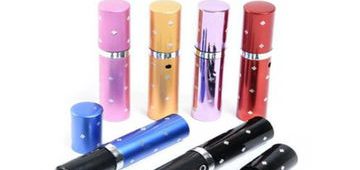Introduction: Calibration Isn’t One-Size-Fits-All
Advanced Driver Assistance Systems (ADAS) are transforming the way we drive. From lane departure alerts to adaptive cruise control, these technologies rely on precision-calibrated sensors to function properly. But when it comes to recalibration, there isn’t just one approach. The two primary methods—Static ADAS Calibration and Dynamic ADAS Calibration—serve different purposes, and knowing when to use each is crucial for accuracy and safety.
Why ADAS Calibration Is Necessary
Every time a sensor is moved or replaced—during windshield replacement, bumper repair, or even alignment work—calibration is required to ensure the system reads its environment correctly. Without proper recalibration, your car’s safety systems might misinterpret road conditions or objects, putting you at risk.
What Is Static ADAS Calibration?
Static calibration is performed in a controlled indoor environment. Technicians use specialized tools, targets, and precise measurements to recalibrate cameras and sensors while the vehicle is stationary.
Key Features of Static Calibration
- Performed inside a shop or calibration bay
- Uses mounted targets and measuring tools
- Ideal for front-facing cameras, radar sensors, and blind spot monitors
- Does not require road conditions or movement
When Is Static Calibration Needed?
- Windshield Replacement ADAS Calibration
- Bumper Radar Calibration
- Camera Sensor Calibration
- Lane Departure Warning Calibration
What Is Dynamic ADAS Calibration?
Dynamic calibration involves driving the vehicle at specific speeds under particular road and traffic conditions. During this process, the vehicle’s sensors are calibrated while it’s in motion.
Key Features of Dynamic Calibration
- Performed on public roads or closed test tracks
- Requires driving at defined speeds and road conditions
- Ideal for radar sensors and systems that rely on real-time environmental feedback
When Is Dynamic Calibration Required?
- Forward Collision Warning Calibration
- Adaptive cruise control adjustments
- Steering Angle Sensor Calibration
- Automotive Safety Systems that rely on moving data
Some Vehicles Require Both
Many modern vehicles need a combination of both static and dynamic calibration, especially those with multiple sensors in various locations. A complete calibration process ensures every system functions correctly.
OEM Specifications Matter
Each manufacturer sets different calibration procedures for their vehicle models. Following OEM Spec Calibration guidelines is essential to maintain system accuracy and ensure warranty compliance.
Can You Skip One Method?
Skipping a required calibration method can lead to incomplete or inaccurate sensor performance. That’s why it’s important to work with certified technicians who understand the full scope of ADAS requirements.
Tools and Environment Needed
Static calibration requires a controlled indoor space with target boards and laser measuring tools. Dynamic calibration demands ideal road conditions—good visibility, consistent speed, and minimal traffic.
Technician Expertise Is Critical
Certified ADAS Calibration Technicians are trained to know which method your vehicle needs, how to execute it, and how to verify successful calibration through diagnostic software.
Mobile Calibration: Flexibility Without Sacrificing Accuracy
Some service providers offer Mobile ADAS Calibration, bringing both static and dynamic equipment directly to your shop or business. This saves time without compromising on quality.
Houston’s Go-To for Precision Calibration
Drivers and shops across Texas trust the Houston Automotive Calibration Experts for their knowledge and advanced tools. Whether it’s a routine calibration or post-collision service, they deliver accuracy, efficiency, and compliance.
Conclusion: Choose the Right Method, Every Time
Understanding the difference between static and dynamic calibration helps ensure your ADAS systems perform as intended. Both play critical roles depending on your vehicle’s configuration and repair history. Partner with experts who specialize in complete ADAS recalibration for peace of mind on every drive. Need precision? Trust certified pros for your next Dynamic ADAS Calibration or static session.
FAQs
1. How do I know which calibration method my vehicle needs?
It depends on the ADAS features and manufacturer specifications. A certified technician can assess and recommend the right method.
2. Can calibration be done at my location?
Yes, with Mobile ADAS Calibration services, both static and dynamic methods can be performed off-site.
3. What happens if calibration isn’t done correctly?
Your safety systems may fail or provide false alerts, putting drivers and passengers at risk.
4. How long does each calibration type take?
Static calibration usually takes 1–2 hours, while dynamic calibration depends on traffic and road conditions.
5. Do I need recalibration after every repair?
If the repair affects cameras, sensors, or alignment—yes, recalibration is essential.



